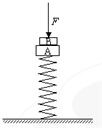(A)
Since the 1970s, scientists have been searching for ways to link the brain with computers. Brain-computer interface (BCI) technology could help people with disabilities send commands to machines.
Recently, two researchers, Jose Millan and Michele Tavella from the Federal Polytechnic school in Lausanne, Switzerland, demonstrated (展示) a small robotic wheelchair directed by a person’ s thoughts.
In the laboratory, Tavella operated the wheelchair just by thinking about moving his left or right band. He could even talk as he watched the vehicle and guided it with his thoughts.
"Our brain has billions of nerve ceils. These send signals through the spinal cord (脊髓) to the muscles to give us the ability to move. But spinal cord injuries or other conditions can prevent these weak electrical signals from reaching the muscles," Tavella says. "Our system allows disabled people to communicate with external world and also to control devices."
The researchers designed a special cap for the user. This head cover picks up the signals from the scalp(头皮) and sends them to a computer. The computer interprets the signals and commands the motorized wheelchair. The wheelchair also has two cameras that identify objects in its path. They help the computer react to commands from the brain.
Prof. Millan, the team leader, says scientists keep improving the computer software that interprets brain signals and turns them into simple commands. "The practical possibilities that BCI technology offers to disabled people can be grouped in two categories: communication, and controlling devices. One example is this wheelchair."
He says his team has set two goals. One is testing with real patients, so as to prove that this is a technology they can benefit from. And the other is to guarantee that they can use the technology over long periods of time.
Which of the following shows the path of the signals described in Paragraph 5 ()
A. scalp→computer→cap→wheelchair
B. computer→cap→scalp→wheelchair
C. scalp→cap→computer→wheelchair
D. cap→computer→scalp→wheelchair

